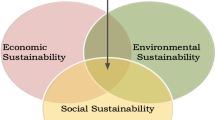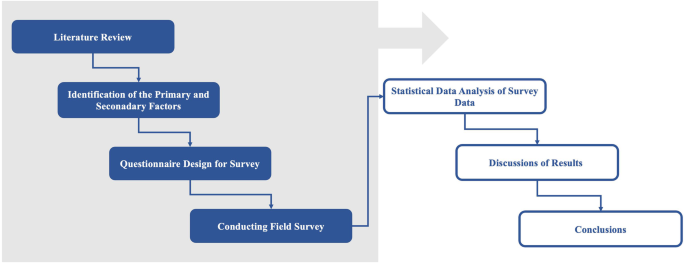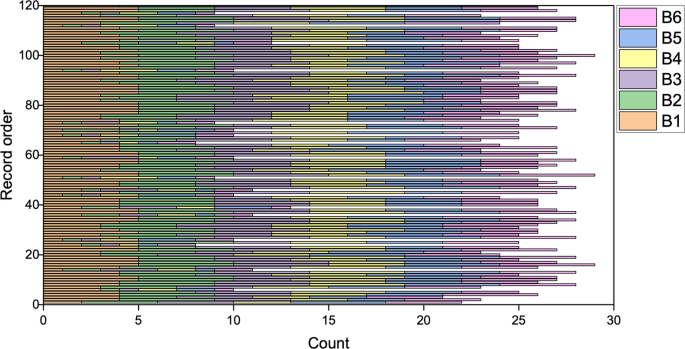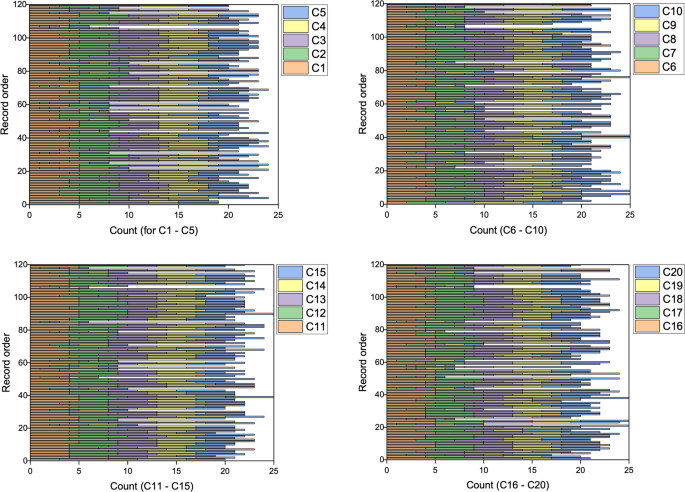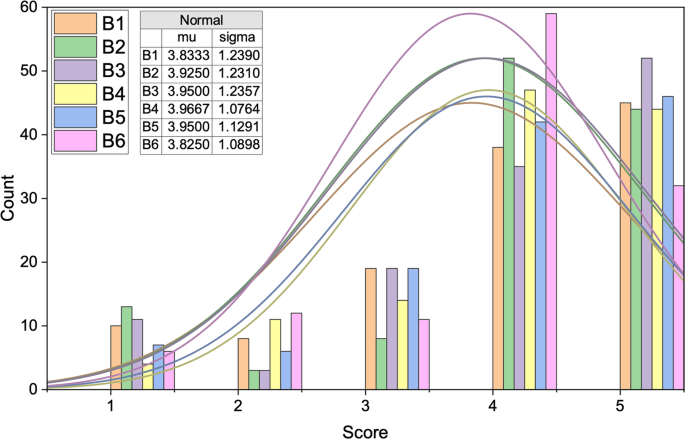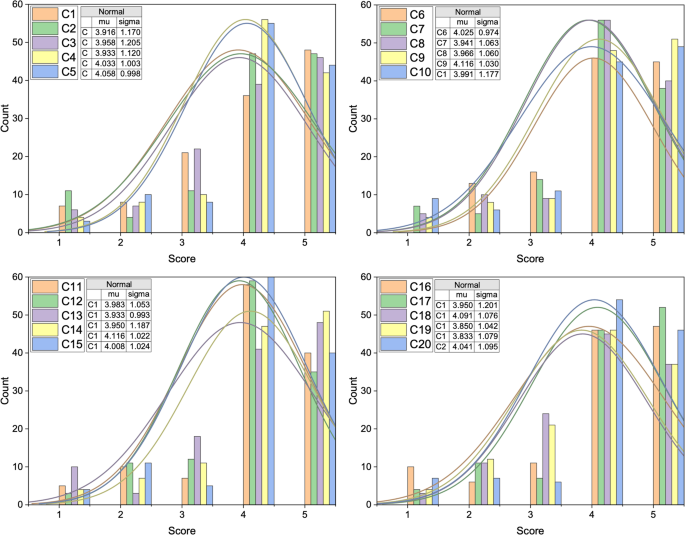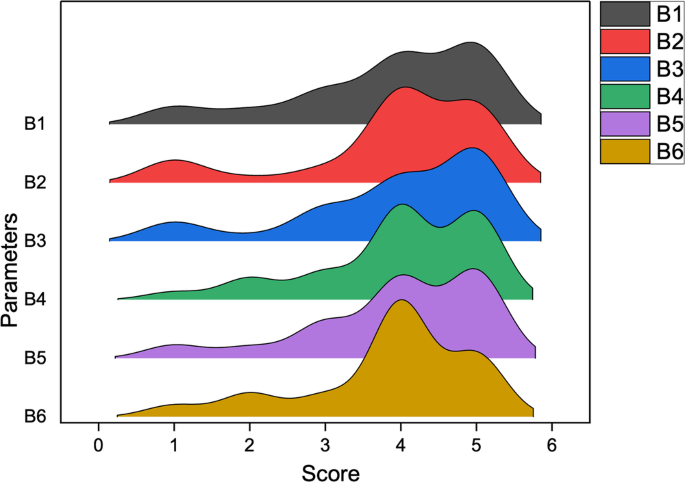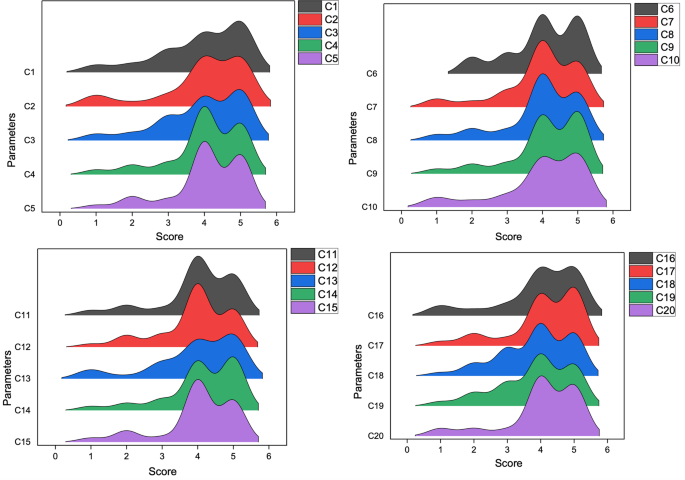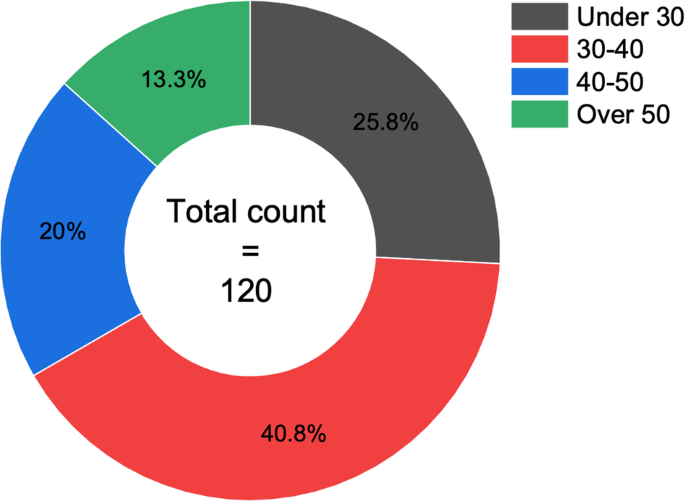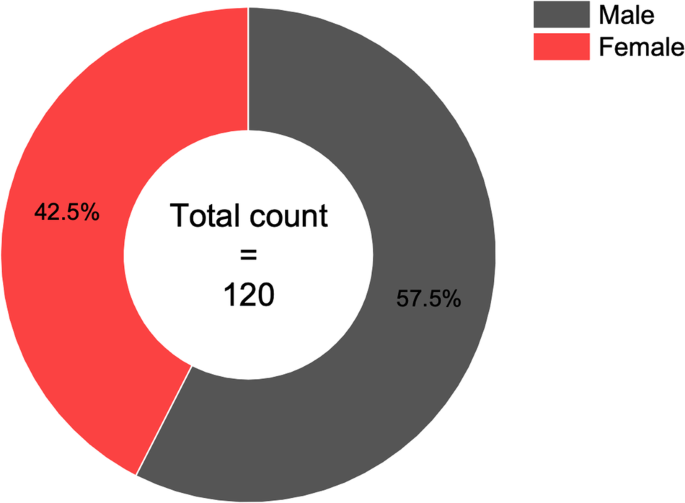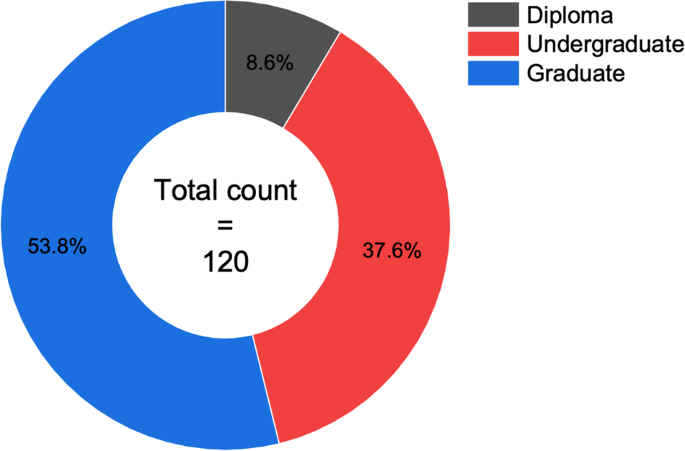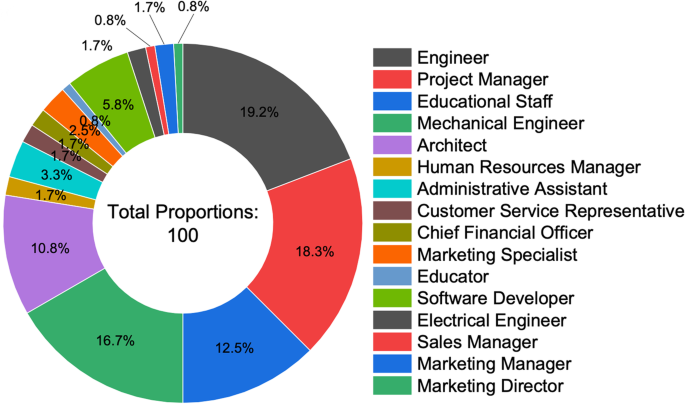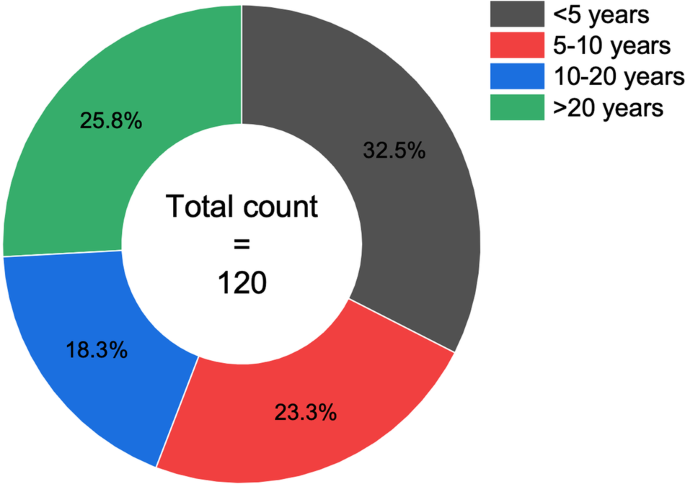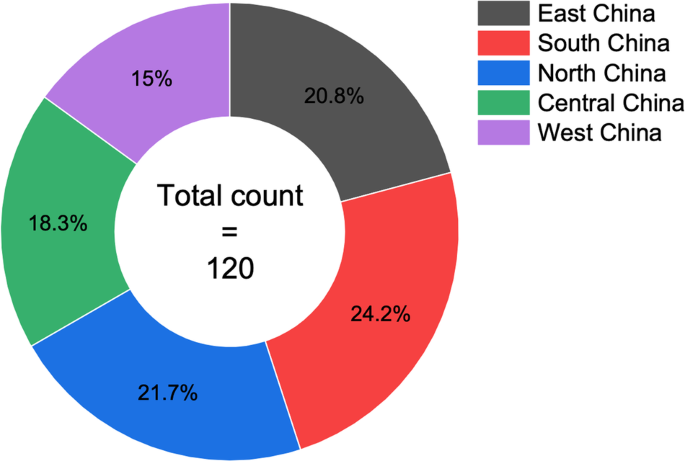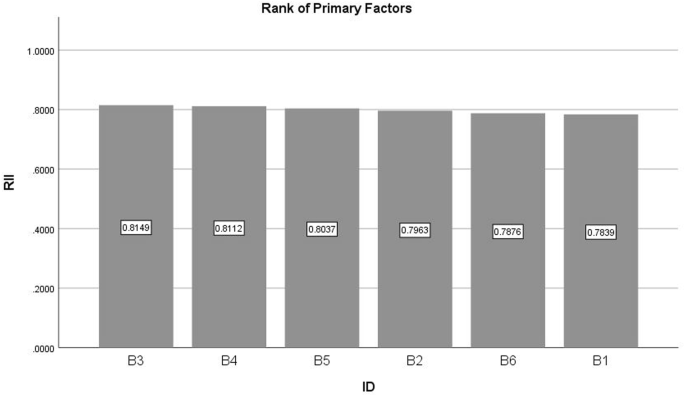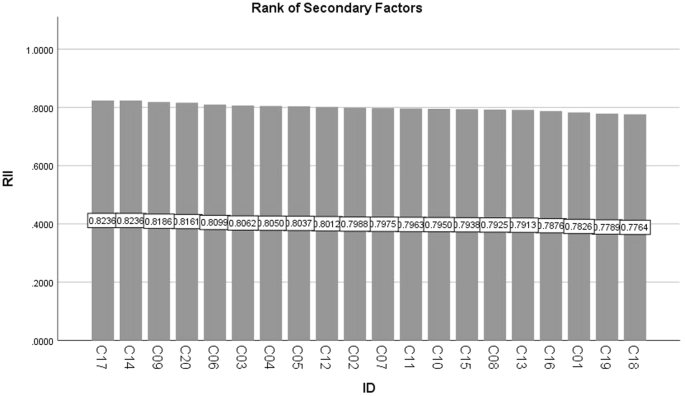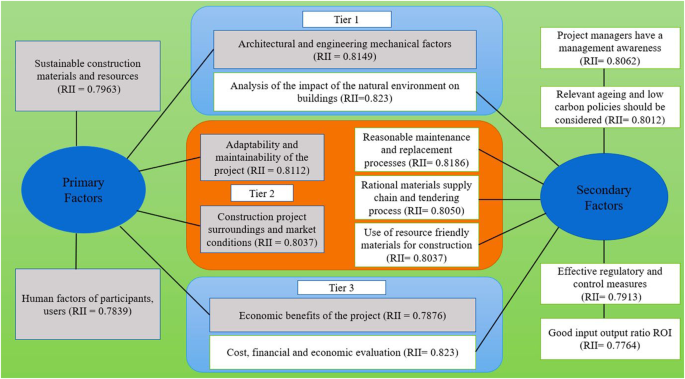Abstract
Rapid urbanization has reformed the peripheries of China’s main cities during the last four decades. The rural areas have been constantly developed through infrastructure development in recent days which introduces a newly semi-urban region referred to as Desakota. The purpose of this research is to discover potential influencing factors of housing construction technology in desakotas of China which needs to be assessed for the implementation of Desakotas forming globally. In this study, a total of six key primary factors and twenty key secondary factors have been shortlisted, which were surveyed by 120 respondents. After the statistical analysis, it is seen that one primary factor, “Architectural and engineering mechanical factors” has been ranked top. Moreover, “Cost, financial and economic evaluation and Analysis of the impact of the natural environment on buildings” both ranked top among twenty secondary factors. This study adds to the body of knowledge by revealing the primary contributing elements for the first time that need to be taken into consideration in the rural and town communities of desakotas in China. The study results could help stakeholders, construction firms, academicians, researchers, and the government to focus their efforts and resources on the significant changes in the Desakotas in preparation for rapid urban development.
Similar content being viewed by others
Introduction
In the lives of people and society, housing is crucial. It significantly affects our lives and the way we live on a social and economic level. It immediately and directly affects a society’s politics, social life, economy, ecology, health, and education (Sinha, 1978). Due to the economy’s rapid growth, a sizable percentage of the global economy was taken up by the building sector (Huang et al., 2021). The amount of human activity on earth is constantly growing to meet daily demands. Individual needs are limitless, and the pressure to provide for the needs of the growing population causes the environment to deteriorate either naturally or as a result of human activity (Olusola et al., 2019). The building and construction industry was reported to be responsible for 36% of the world’s energy consumption and around 40% of carbon equivalent emissions, making it a crucial sector of the global economy (International Energy Agency (IEA), 2020; Nwodo et al., 2019). J.G. Nellis and J.A.J.U.S. Longbottom (1981a, 1981b) studied the housing market in Britain and revealed that the primary determinants of home prices are income, loan rate, loan balance, and the stock market. Squatter colonies have grown up around many urban centers in develo** countries due to high rates of poverty and unemployment, as well as rising housing and land costs (Bordignon, 1998). Urban dwellers made up 59% of the overall population in 2017, up from 18% in 1978. As a result, the urban population increased by 16 million people each year (Yearbook, 2012). As urban areas quickly encroach onto neighboring territory, develo** nations frequently display glaring urban-rural wealth disparities (Zhong et al., 2022). The line separating urban and rural areas is getting hazier because encroachment on agricultural property is the primary means of expansion (Chen et al., 2020; Firman, 2009).
China’s construction industry produced more than 24 trillion yuan in total in 2019, making up over 25% of the total national economic output of the nation. However, in the same year, 30% of China’s total carbon emissions came from its building industry, which was the primary contributor to the country’s environmental degradation (Yin et al., 2020). In China, the real estate market only recently began to flourish. However, the exorbitantly high cost of homes drew numerous academics to investigate the topic and perform thorough studies (Wang and Jiang, 2016). In conclusion, the main perspectives of domestic scholars are as follows. Before 2009, Chinese home prices rose at an average yearly nominal pace of 11%, and this price surge happened at a time when ideologies (from the plan to the market), incomes, urban populations, and policies were rapidly changing (Qiang Li and Chand, 2013). China’s urbanization rate climbed from 17.9% to 60.6% between 1978 and 2019, and the urban built-up areas in municipal districts have increased by at least eightfold since 1978 (Xu et al., 2020). The income difference between urban and rural areas made up 34% of China’s overall inequality in 2013 (Jain-Chandra et al., 2018). This research is motivated by a desire to comprehend the factors influencing the growth in Chinese housing technologies, particularly in an era of altering ideologies, changing wages, urbanization, and governmental reforms. It seeks to provide insight into the underlying causes of China’s housing affordability crisis, as well as to solve the urban-rural economic disparities and agricultural land encroachment that usually accompany rapid urbanization. It also tries to solve the income disparities between urban and rural areas, as well as agricultural land encroachment that usually accompanies fast urbanization. Understanding the dynamics of housing development in China can aid in the creation of effective policies and strategies for fair and sustainable urban growth. In China, traditional methods and technologies are used to construct all types of civil engineering works, including infrastructure and local/domestic buildings. Even though construction projects are up, most scenarios need more sophisticated construction procedures and equipment. Construction work quality and efficiency could be much higher owing to a lack of upgraded materials, new technology, and new equipment. Many studies have been undertaken in China to investigate the transformation of these hybrid spaces into global aspects, but most of them concentrated on researching transitional, ecological, and impacts on socio-cultural phenomena none of the studies provided any solid technique or framework for identifying the fundamental factors which resulted in such urbanization hub in certain regions (Lin et al., 2018), in investigating the key barriers to the adoption of green building technologies in the Ghanaian construction market, concluded that the potential influencing factors are government barriers, human barriers, knowledge and information barriers, market barriers, and cost and risk barriers. Of these, high cost, lack of government incentives, and lack of financing schemes (e.g., bank loans) were the top three key factors. This study found that the diversity of housing patterns in Binalood County was 35.4%; race, housing type, family structure, migration, social stratification, security, religion, and tradition were some of the sociological factors that influenced neighborhoods. According to this argument (Iranmanesh and Imantalab, 2014), four basic factors that influence housing in a given area are land patterns, livelihood-based economy, climatic factors, and socio-cultural conditions of the population. Neighborhood changes, especially in rural suburban areas, provide a path for different land use patterns (Omofonmwan and Kadiri, 2007). Ofek and Portnov (2020), based on a national survey conducted in Israel in 2016, the study found that raising awareness of the benefits of green building has different impacts on different stakeholder groups. Therefore, in order to promote cleaner production in the construction industry, a user-tailored strategy should be used, aiming to stimulate interest in green building among various stakeholder groups.
Another study by F. Li et al. (2022) examined the factors that influence the green development practices of Chinese construction firms based on their own green development practices. This study used literature analysis to illustrate how technical, organizational, and environmental factors influence the adoption of green development practices by construction firms. Despite the 99.6% accuracy of the prediction model, the large discrepancy between the predicted and actual values of the number of patents remains an issue in this study. Factors and issues that hinder orderly infrastructure development were studied in the suburban living areas of the Kumasi metropolitan area (Owusu and Asamoah, 2005). Liu et al. (2020), based on a review of existing studies and the characteristics of building retrofitting in China, concluded that the factors affecting the achievement of green retrofitting in China can be classified into four categories, namely: management, finance, knowledge information, and technology. Following a survey of land for housing retrofit in the peri-urban area of Kumasi, Ghana, four measures were recommended: use of site and service strategies, landowner funding for infrastructure provision, cooperation between traditional authorities and public sector agencies/departments, and implementation of planning and development legislation. The study made recommendations for action to address infrastructure and service provision in the peri-urban settlements of Kumasi, Ghana. Qianwen Li et al. (2018) A theoretical and quantitative research model of urban residents’ willingness to pay for green housing was constructed using five first-tier cities in China as an example. The following five distinct effects were identified, which are (1) the purpose of purchase is divided into three dimensions: willingness to pay for economic and practical purposes, willingness to pay for investment, and willingness to pay for comfort and pleasure. Willingness-to-pay barriers were divided into internal (security/functional) and external (economic/policy) risks. (2) There are no significant differences between gender and income level, marital status and household permanent residence, education and housing type, and household permanent residence in willingness to pay for economic utility. (3) Education plays a moderating role between anchor price and residents’ willingness to pay. (4) The order of influence of significant WTP influences was: group pressure(+) > functional risk(−) > individual attitude(+) > perceived behavioral control(+) > self-worth(−) > security risk(−) > ecological value(+). (5) Residents are most willing to purchase 3-star green homes when government subsidies are available; in the absence of subsidies, the maximum incremental cost residents are willing to pay is $51–100/m2. It is found that proper housing construction requires effective land tenure, land use map**, and land development analysis because land is a major determinant of production factors. Gan et al. (2022) assesses housing issues in the Kingdom of Saudi Arabia (KSA) and supports rational housing initiatives. The Relative Importance Index (RII) and cardinality were used to assess the survey responses of housing experts. According to the study, the greatest barriers were high residential land costs (RII = 0.89), high construction costs (RII = 0.87), and high urbanization rates (RII = 0.76). The study found that the results for the six challenges examined differed significantly based on participant demographics. The VAT exemption program, the developmental housing program, and forms of ownership were the most successful empowerment programs (RII = 0.82, 0.73, and 0.73, respectively). This study recommends that the government reconsider some of these initiatives and reassess the difficulty of accessing affordable housing. J.G. Nellis and J.A. Longbottom (1981a, 1981b) identified the causes of the sharp rise in house prices and listed other important reasons for this situation. They used error correction estimation methods to examine the key variables that affect house prices in the UK. They concluded that mortgage lending had a significant effect on house prices, while secondary variables included mortgage interest rates and building society stock holdings.
According to the above studies, the factors that have an impact on construction technology in different types, and different attributes of regions have been much studied, and numerous factors are encapsulated in the four macro elements of politics, economy, culture, and nature. In the process of urban construction, due to the relatively weak self-organization, strong government intervention, and serious commercialization, the two macro-influencing factors of politics and economy dominate, and the factors mostly depend on the macroeconomic situation, supply and demand, and the economic condition of the subject and the object. In the process of rural construction, the countryside, as a weak point of development, has more freedom in politics and economy compared with the systematic planning and management of big cities, but the countryside, as the most primitive human settlement, is the cradle of human literature and painting, and the two macro factors of culture and nature dominate. The urban-rural fusion village and town, which is produced under the general trend of economic domination, is a complex with multiple influences of politics, economy, culture, and nature, and because of its composite properties, it cannot fully stimulate the potential of urban-rural fusion village and town by copying the urban or rural development model. The development of urban-rural integrated villages and towns needs to be explored. Existing studies have mostly focused on the influence of urban and rural building technology influences, while studies on rural-urban integration towns have mostly focused on political and cultural aspects, and obtaining data on rural settlement patterns is one of the main obstacles to this research. This argument (Iranmanesh and Imantalab, 2014) states that the four basic factors that influence housing in a given area are landform, livelihood-based economy, climatic factors, and socio-cultural conditions of the population. However, due to the difficulty of obtaining data, specific influencing factors were not studied in a breakdown.
Therefore, this study collected data from various types of experts engaged in related work or research, such as engineers, contractors, homeowners, university students, and other related groups, always through an objective medium as an intermediary to obtain data, to somewhat circumvent the difficulty of direct data acquisition, and to test the data through structural equation modeling and quantitative analysis of the acquired elements, Cronbach’s alpha test, through a hypothesis and verification of the research process, so as to construct a set of research methods suitable for the sequence of factors influencing the construction technology of urban–rural integration type villages and towns, and provide guidance to the construction of urban–rural integration type villages and towns.
Research methodology
This study focuses on identifying and analyzing the housing construction technology factors of the Desakota region of China. The factors were identified from a rigorous literature review and sociocultural needs assessment at the Desakota regions. The primary factors are the crucial and elementary ones, and six of these have been identified. Moreover, the secondary factors contributed a significant impact on the primary factors, and twenty of these secondary factors were also identified. Then, with the help of an expert panel, a complete discussion about the primary and secondary factors of housing construction technology was held. The expert panel consists of a group of civil engineers, architects, construction project managers, and contractors who have more than 10 years of working experience in the related field, related university Professors, and related university students who have appropriate knowledge about this research topic. A questionnaire was prepared to analyze the necessity of these factors and their influence over that region for housing construction technology. Figure 1 shows the conducting process of this study with a sequential flowchart. These steps were performed sequentially during the progress of this study.
Questionnairre design
Initially, an extensive review of existing studies on housing construction technology in China, particularly in Desakota town and village regions, was conducted. This allowed for a deeper understanding of the various influential factors affecting the construction industry globally. These studies highlighted numerous technological factors associated with specific construction sectors, which can impact the economic conditions of the outer peripheries in these regions. From this pool of studies, a total of twenty significant factors were selected to create a questionnaire, which was divided into primary and secondary sections. The selection process considered the importance level of these factors in previous studies and their relevance to the construction industry environment in China.
Additionally, categorizing these technological factors into sections is crucial for better understanding their impacts. This subdivision assists in expediting the identification of sources and analyzing the effects within a shorter timeframe. Once the questionnaire was prepared, incorporating a five-point Likert Scale evaluation system was deemed suitable for assessing the factors. Likert Scale-based questionnaires are efficient for data collection, making them a favorable choice for surveys, and the responses gathered provide reliable data based on respondents’ personal experiences. The questionnaire designed for this study consisted of multiple sections. The initial section collected basic information about the respondents, including detailed demographic data. The main section focused on housing construction technological factors and the corresponding Likert Scale evaluation information. Respondents were requested to rate the effects of these technological factors on a five-point scale, ranging from “1: Not at all Likely” to “5: Extremely Likely.” Table 1 displays the selected construction technology factors, along with the literature sources used in the study (Table 2).
Questionnaire survey
Following the preparation of the questionnaire, a field survey was carried out to collect data on the significance of the 26 identified influencing factors within the desakota regions of China. Approximately 120 individuals associated with the construction sector were interviewed as part of this survey. The objective was to rank these factors based on their importance. The authors visited various construction sites located in different towns and villages within the Desakota region and conducted interviews with individuals ranging from marginal-level workers to executives. The initial round of interviews focused on individuals directly involved in the construction sites, such as site engineers, contractors, site supervisors, subcontractors, foremen, and laborers.
Each interviewee was asked to provide their opinions and rate the influencing factors on a scale of 1–5. Subsequently, the authors also interviewed company officials who were engaged in administrative and offsite activities, including structural engineers, architects, managing directors, business development associates, planners, and financial advisors. These interviews provided comprehensive insights into the influence of housing construction factors from both the perspectives of on-site workers and those involved in other aspects of the construction industry. Furthermore, the field survey also gathered crucial information about the current practices related to available machinery and its implications applied by the contractors involved in construction projects influenced by the factors present in the Chinese construction industry. To enhance convenience, an example of a questionnaire with responses from a respondent has been included at the end of this study. Once all the data were collected, the study proceeded to the statistical analysis phase.
Data collection and analysis
For data collection purposes, more than sixty ongoing construction projects were surveyed. Almost 140 construction personnel were given the questionnaire, and among them, 120 responded adequately, which is a response rate of about 86%. Table 3 describes the general information of the respondents. About 69 of the respondents were male and 51 were female. Moreover, most of the respondents were between the ages of 30–40, and the majority of them were engineers and architects. Though people from all major divisions responded to the survey, most of the surveyed projects were based in the southern regions of China (24.2%) and northern regions of China (21.7%). The reason behind this is the abundance of construction projects and the high rate of respondents from these areas. To facilitate further discussion and comprehension, the data analysis results were presented in graphs and tables. To offer an overview of the respondents’ general information and their awareness of lean construction principles, percentage and frequency distribution were used.
Relative Importance Index (RII)
The five-point Likert scale ranging from 1 (strongly disagree) to 5 (strongly agree) was adopted and transformed to the relative importance index (RII) for each factor as follows:
In the above (1) equation, ‘W’ is the weighting given to each factor by the respondents (ranging from 1 to 5), ‘A’ is the highest weight (i.e., 5 in this case), and ‘N’ is the total number of respondents in this study (i.e., 81 in this study). The RII value ranges from 0 to 1, which is the higher the value of RII, the more important the factor affecting quality in construction. The RII was used to rank the different factors. The discussion will be made when the RII is classified as the most preferred primary and secondary factors. The Relative Importance Index (RII) was calculated by the tool SPSS and Microsoft Excel 2019.
Data validation test (Cronbach’s alpha test)
It was critical to conduct proper checks to ensure the credibility and authenticity of the independently obtained data from respondents from various designations and organizations. Due to the inclusion of several Likert questions in the questionnaire, the Cronbach Alpha test, a generally used measure of reliability, was used in this study. Cronbach’s Alpha measures the internal consistency of the survey’s highlighted issues and generates a value ranging from 0 to 1. Higher numbers suggest more item consistency (Cronbach, 1951). According to previous research, an alpha score between 0.70 and 0.95 indicates strong internal consistency and is regarded as acceptable (Gliem and Gliem, 2003). The data is reliable when the alpha value is higher than 0.70 (Abas et al., 2015; Hayes and Krippendorff, 2007; Tavakol and Dennick, 2011). The required data for this study were collected independently from various respondents of various designations and organizations. So, it is important to analyze to check the reliability and validity of the independently collected data.
Results and discussions
Background information of respondents
Table 3 displays the bibliographic characteristics of the participants in the survey, which was conducted throughout China. An equal number of questionnaires were distributed in each region of the country. The majority of the data was collected from respondents in the southern and northern regions, with ~29 questionnaires completed by each group. The result reveals that 57.5% of the respondents were male, while the remaining 42.5% were female. Concerning the organizational characteristics of the respondents, 18.3% worked in project management organizations, 16.7% in mechanical engineering organizations, 10.8 percent in architectural firms, 19.2% in engineering firms, and 12.5% in educational institutions.
The rest of the respondents were employed by subcontracting organizations, accounting for 23%. These organizations represent the contracting, consulting, and client/owner entities within the Chinese construction industry. The survey data indicates that a significant proportion of the respondents were affiliated with consulting departments, which encompassed project management, architectural, and engineering organizations. Additionally, a large portion of the respondents worked in the contracting sector, which included general contracting, subcontracting, and specialty contracting organizations.
In this research, a considerable portion of the participants (23.3%) had a professional tenure ranging from 5 to 10 years, while 32.5% had less than 5 years of experience. Approximately 18.3% of respondents reported having 10–20 years of experience, with the remaining individuals having over 20 years of experience (25.8%) within the Chinese construction industry. Regarding academic qualifications, among all respondents, 36.7% held a bachelor’s degree. A significant majority of the participants (52.5%) possessed postgraduate qualifications such as a master’s degree or Ph.D., while 8.3% held a diploma degree. The inclusion of such background information about the respondents enhances the overall quality and reliability of the findings in this study, contributing to the robustness of the feedback obtained.
It is pertinent to mention that data visualization presents raw data through graphical representations that allow viewers to explore the data and uncover deep insights with ease while enabling researchers to make a quick and compelling comparison of the models. Therefore, the raw survey records are illustrated in the form of a stacked bar plot, doughnut diagram, frequency distribution, and Ridgeline chart. A brief discussion of each diagram is presented in this sub-section. As stated above, a total of 120 databases were collected from various construction sites located in different towns and villages within the Desakota region. The details of collected information, i.e., ratings given by 120 individuals, are illustrated in Figs. 2 and 3, respectively, for primary and secondary factors, in the form of stacked bar plots. Additionally, illustrations of the distribution of respondents‘ feedback are presented in Figs. 4–7. Herein, the score, i.e., the rating that was assigned against each feedback, is plotted along with data distribution. The corresponding mu and sigma are also presented in tables inside each figure.
On the other hand, the demographic information of the survey respondents is presented in Figs. 8–13. Herein, a doughnut diagram is used to demonstrate the overall information. Age group in Fig. 8, gender details in Fig. 9, educational qualification in Fig. 10, professional status in Fig. 11, years of professional experience in Fig. 12, and geographic location in Fig. 13 are presented.
According to the data depicted in Fig. 12, a sizeable portion of the participants (~23.3%) had between 5 and 10 years of professional experience, while 32.5% had <5 years of experience. Also seen, in the Chinese construction industry, ~25.8% of respondents have more than 20 years of experience, while 18.3% have between 10 and 20 years of experience. A detailed discussion has been presented in the subsequent section.
Reliability assessment of primary and secondary factors
In this study, Cronbach’s Alpha tests were performed for the data validation of the designated primary factors in the survey. The internal consistency data were obtained from the various respondents, and that was analyzed using Cronbach’s Alpha test. Tables 4 and 5 show the overall reliability statistics of Cronbach’s Alpha for the six primary factors and twenty secondary factors, respectively. In this study, a constant five-point Likert Scale-based questionnaire was used for data collection, and the alpha value obtained for the primary and secondary factors is denoted as 0.909 and 0.972, respectively. According to Tables 4 and 5, both alpha values indicate the excellent internal consistency region of Table 3. So, the data obtained from the field survey for this study has excellent internal consistency.
Statistical analysis
Primary factors ranking
The overall statistical analysis of all the 26 influencing factors used for this study is represented in the following tables. In Table 6, the primary influencing factors, and in Table 7, the secondary influencing factors for the housing construction technology in Desakota village and town communities in China are shown after the statistical analysis. The overall ranking of the factors was obtained through RII calculation using Eq. (1). Moreover, the tables provide detailed statistics about the mean and standard deviation of the calculated factors. For example, the mean of factor B1 (human factors of participants, users) is 3.9193, which contains a standard deviation of 1.18308.
As mentioned before, the influencing factors were ranked according to their RII value. Among the six primary influencing factors from Fig. 14, “Architectural and engineering mechanical factors (RII = 0.8149)” are the most significant primary factors of housing construction technology in China. “Adaptability and maintainability of the project (RII = 0.8112)” and “Construction project surroundings and market conditions (RII = 0.8037)” are the second and third-ranked influencing factors which are almost nearby in numerical value. However, the next three ranked influencing factors are “Sustainable construction materials and resources (RII = 0.7963)”, “Economic benefits of the project (RII = 0.7876)” and “Human factors of participants, users (RII = 0.7839)”. All of them have an RII value above 0.7, which indicates a significant amount of importance to take into consideration.
Secondary factors ranking
Then the 20 secondary influencing factors were ranked according to their RII value obtained from the data analysis. Table 7 shows the statistical analysis of these twenty factors in detail such as mean and standard deviations. Figure 15 shows the ranked value among these twenty factors. In terms of the level of importance, “Cost, financial and economic evaluation (RII = 0.823) and Analysis of the impact of the natural environment on buildings (RII = 0.823)” contain the same RII value, so these two factors are highly important for the housing constructions in the researched region. Additionally, “Reasonable maintenance and replacement processes (RII = 0.8186)”, “Support from authorities and policies (RII = 0.8161)”, “Proper disposal of waste generated (RII = 0.8099)”, “Project managers have a management awareness (RII = 0.8062)”, “Rational materials supply chain and tendering process (RII = 0.8050)”, “Use of resource-friendly materials for construction (RII = 0.8037)” and “Relevant aging and low carbon policies should be considered (RII = 0.8012)” are highly important secondary influencing factors one after another. All of these influencing factors are directly linked with the primary factors, and that is shown demographically in Fig. 15.
And lastly, the other secondary factors also have significant RII values, these are: “Construction operators are safety conscious (RII = 0.7988)”, “Ease of transport, installation and dismantling (RII = 0.7975)”, “Site selection to avoid unfavorable locations for planning (RII = 0.7963)”, “Compliance with appropriate energy efficient design codes (RII = 0.7950)”, “Create favorable conditions for construction management of retrofit (RII = 0.7938)”, “Safety of users and site environment (RII = 0.7925)”, “Effective regulatory and control measures (RII = 0.7913)”, “Cross-industry market and full cooperation between upstream and downstream (RII = 0.7876)”, “Decision makers have a sound energy saving retrofit plan (RII = 0.7826)”, “Generation of indirect economic effects (RII = 0.7789)” and “Good input-output ratio ROI (RII = 0.7764)”. The RII values of these factors are pretty high, and that indicates their level of importance also. Moreover, none of the factors are less important in terms of RII value. All of these factors imply a remarkable influence over housing construction technology in those particular regions.
Relationship between the primary and secondary factors based on expert opinions
The last phase of this study established the relationship between the primary and secondary factors that will demonstrate a clear understanding of the most influential factors of this research. For this process, the opinions of the stakeholders who possess the expertise and long-term on-field experience in the construction sector were required. Though this study discusses twenty-six influencing factors of the housing construction technology in desakota village and town communities in China, adopting these measures for all these factors cumulatively is troublesome for the decision-makers. For this reason, the key factors which are highly important for housing construction technology were shortlisted. Figure 16 shows the factor relationship diagram. The diagram integrates aligned primary and secondary factors obtained through RII analysis from all the field surveys. These factors are categorized under three tiers, which are discussed below:
Tier 1—Architectural and engineering mechanical factors/Analysis of the natural environment in the building
The natural environment provides the best functional elements to a building. The architectural and engineering mechanical factors are widely used to control the inner space in a way that keeps the houses more comfortable for the occupants (Chen, 2004). The architectural and engineering factors analyze the natural surroundings to control the functional elements in an ergonomic way for the inhabitants of the houses.
As technological changes are required to control the interior of the houses, environmental analysis such as temperature, humidity, precipitation, and ventilation provides the designated values to attain comfort in houses. These two top-ranked primary and secondary factors, respectively need special endeavor for the construction of future communities in the desakota regions. Moreover, the architect and HVAC engineer should design the houses as an irremovable part of the built environment so that the occupants can act as a potential marketing element for the upcoming generations (Zallio and Berry, 2017).
Tier 2—Construction project management/supply chain management
Good project management can result in a better quality project for the end users. Construction adaptability and maintenance ensure success at the end of the project as it totally depends on the project’s surroundings and market conditions (Douglas, 2006). Housing construction faces many problems during the establishment process and these barriers should be mitigated through effective management. The secondary factors reflect the actual barriers that can be faced in the construction stage. The materials availability and supply to the site from the local market is the major concern for the successful project implementation. Because user-friendly materials are the primary resources to complete projects as per the customer’s requirement. On-time delivery of materials at the site and maintaining the budget of materials with the market price is a common challenge to the project’s success (Famiyeh et al., 2017).
Moreover, the construction of the houses may require much maintenance during the service period. These factors are highly recommended to take action at the serviceability phase with reasonable process and cost. The tenderer must ensure the “Defect Liability Period (DLP)” from the constructor group for a negotiable replacement and repair process for the end users. These combined influential factors must be taken heavily for successful project implementations.
Tier 3—Financial evaluation of the project
A fluent cash flow is vital for completing a construction project in business. The economic benefits are the primary goals for the project stakeholders of both parties. The client invests a solid amount of money into the project to ensure profit during the service period of the project. The low-quality project will result in financial insolvency and decrease the interest for the housing constructions in that region. That is why high-quality projects must be attained in a strategic way to ensure a sound amount of profit (Dziadosz and Rejment, 2015). The customers require the best quality buildings with other user-friendly functions for a reasonable amount of money. It depends on the clients and designer what amount of quality-based elements they will incur into the building so that they can acquire a good cash flow along with the best services to the customers. To achieve that both clients and contractors should avoid financial insolvency at any stage of the project.
Discussions
This study combines a quantitative and qualitative technique of the influencing factors of housing construction technology in the desakota village and town communities in the context of China. The factors identified through the literature review, which were incorporated in the survey, offered a precise scenario of the major influencing factors that can be incorporated into the housing constructions in China. The statistical analysis of the influential factors offers a quantitative approach to analyzing the construction technology and assessing the current practices while gathering knowledge to provide a comprehensive qualitative discussion of construction technology in China. According to the findings of this study, Architectural and engineering mechanical factors incorporate great influences during the execution phase as the primary factors, and cost, financial and economic evaluation, and analysis of the impact of the natural environment on buildings among the secondary factors are termed as the most influential factors of the housing constructions in Desakotas in China.
Previously a study conducted by Guo et al. (2022) on the analysis of spatial patterns and socioeconomic activities of urbanized rural areas in Fujian province, China, reported that spatial clustering, proximity to well-developed urban centers, and transportation accessibility influenced the development of the urbanized rural areas. They found four representative socioeconomic activities in the urbanized rural areas: an urban-like housing model, diverse non-agricultural activities, transportation improvements, and sufficient health services. Zhu et al. (2022) conducted a study on the Low-Carbon Construction System of Desakota Village-and-Town Communities in Zhejiang Province of China, and they established a correlation evaluation model to provide the basis for the optimization and improvement of a low-carbon construction system from multiple dimensions and perspectives, thus providing a theoretical basis and practical guidance for the future low carbon construction of desakota villages and towns. However, little research has been conducted on the desakota village and town communities in China for the influences over the occupants on housing construction technological requirements. In this study, the primary factors reflect the major concerns over the desakota regions that are highly recommended by the users for the comfort of this type of semi-urban community. The secondary influencing factors focus on the detailed phenomena that can assist the desakotas in the rapid growth of housing development.
The significance of this study lies in its contribution to the understanding and enhancement of housing construction technology in the Desakota communities of China. By identifying and ranking the factors that exert the most influence on construction processes, this research equips stakeholders, including government authorities, developers, designers, and builders, with a comprehensive framework for making informed decisions (Valdes-Vasquez and Klotz, 2013). This study reflects that a rapid transition of the villages and towns requires extensive use of contemporary and user-friendly materials in modern houses. As semi-urbanization becomes a phenomenon beyond China, the insights obtained from this study can be extrapolated to similar environments in other countries facing rapid urban development (L. Li et al., 2022). The tiered relationship between architectural factors, environmental analysis, project management, supply chain management, and financial evaluation provides a universal framework that can be tailored to diverse contexts.
Additionally, the effective supply of required materials also possesses vital changes in the construction stages. However, it is required to take proper caution to not cause any harm to the local surroundings of the site by improper use of materials and machinery. The ease of supply, use, and dismantlement requires safety management and waste management at the site for environment-friendly conditions. However, Energy efficiency has been a major issue in that region by using low carbon emitting materials which need to be taken into account by the policymakers (J. Li and Colombier, 2009). The project management policies such as adaptability and maintainability of the project and economic benefit of the project as primary factors can constitute noticeable changes in the urban developments, which has been reported by the respondents in the field survey. Decision-makers, construction operators, construction managers, health & safety executives, and policymakers require extra awareness from the planning stage to successfully implement the project at the site. These factors can provide a sound and neat boost to work productivity during the housing construction in the Desakota region (Shao, 2015). Meanwhile, creating favorable conditions for construction management of retrofit and maintenance and cross-industry market and full cooperation between upstream and downstream will increase the economic benefits to the end users of the project (Sun et al., 2022).
Conclusions and recommendations
Conclusions
In the wake of rapid urbanization and the emergence of Desakota regions in China, housing construction technology has gained paramount importance in ensuring the development of sustainable, comfortable, and efficient living spaces. Desakota villages and towns are termed semi-urban and transitional communities in the literature due to their complex structure system. Thus, housing development in these regions of China requires many factors to be considered. The findings of this study provide valuable insights into the key factors that underpin housing construction technology in Desakota communities in China. The research reveals a tiered relationship between architectural and engineering mechanical factors, environmental analysis, construction project management, supply chain management, and financial evaluation. These factors collectively contribute to the holistic development of housing projects in these semi-urban regions. This study offers a prime focus on the most influential housing construction technology factors in the desakota villages and town communities in China. The literature review shortlisted a total of six primary factors and twenty secondary factors, which were surveyed by the regional peoples. These factors were identified and categorized based on their significance to prepare the questionnaire for the survey.
After conducting a rigorous statistical analysis of survey data obtained from 120 respondents, the influencing factors were ranked on a primary and secondary type basis according to the RII index. It was observed that architectural and engineering mechanical factors ranked top among all the primary factors with an RII value of 0.8149, and this also correlated with the secondary factors. Additionally, “Cost, financial and economic evaluation and Analysis of the impact of the natural environment on buildings” both ranked top among the secondary factors with an RII value of 0.823. Besides, a qualitative discussion on how the influencing factors work and benefit the projects is discussed in this study. The differences in the factors may create nuances in the understanding of the developers, and hence, a relationship is established between the primary and secondary factors, which signify the aligned factors. The relationship states that engineering and mechanical factors can impose valuable changes in the natural environmental surroundings of the buildings, which can be achieved through proper energy efficiency. Also, the construction materials, supply chain, and project management have a slight relationship in ranked requirements which also need to be a major consideration during construction. However, the benefits of a project are mainly monetary and that can only be achieved by an accurate financial evaluation at a certain stage of the project (Zou et al., 2007). The purpose of this study was to lay the groundwork for the proposal of a regionalized, differentiated, and dynamic construction model, to avoid the appearance of “thousands of villages with the same features,” and to provide guidance for their future development and construction. Different types of housing, materials, and building techniques may be appropriate for different communities, depending on criteria such as cost, utility, and esthetics. This technique would allow for the construction of housing options tailored to the individual demands of each Desakota community. These factors collectively contribute to creating an environment that is not only economically viable but also environmentally responsible (Valdes-Vasquez and Klotz, 2013).
Furthermore, the study analyzed the relationships between primary and secondary factors in the construction industry, identifying three categories of crucial factors: architectural and mechanical engineering, construction project management, and financial evaluation. Tier 1 focuses on optimizing building interiors for occupant comfort, while Tier 2 includes effective project management, material availability, and timely delivery. Tier 3 evaluates a project’s finances, aiming for economic benefits and high-quality initiatives. The study used quantitative and qualitative methods to identify influential factors, with architectural and mechanical factors being the primary determinants. Respondents emphasized the importance of effective project management and economic benefits, emphasizing adaptability and maintainability. Cross-industry cooperation and favorable conditions for retrofitting and maintenance were also highlighted for increased economic benefits.
Recommendations
Building upon the conclusions drawn from this study, several recommendations can be made for future research and practical applications:
-
(a)
Multi-disciplinary collaboration: Encourage collaboration between architects, engineers, environmental experts, and urban planners to create housing designs that integrate seamlessly with the natural environment while ensuring functional efficiency.
-
(b)
Policy formulation: Policymakers should leverage the insights from this study to formulate guidelines and regulations that prioritize sustainable construction practices in Desakota region. These policies can incentivize the use of resource-friendly materials, energy-efficient designs, and environmentally conscious building techniques.
-
(c)
Supply chain optimization: Developers and construction managers should focus on streamlining the supply chain process, ensuring timely and cost-effective procurement of materials. Rational materials supply chains and tendering processes can reduce delays and enhance project efficiency.
-
(d)
Project management and maintenance: Emphasize the importance of adaptability and maintainability of projects. This includes planning for future retrofitting and maintenance and ensuring the longevity and sustainability of constructed housing.
-
(e)
Financial evaluation: Project stakeholders should prioritize economic benefits alongside environmental and social considerations. Financial evaluation strategies must encompass factors that contribute to long-term economic viability and profit generation.
-
(f)
Cross-industry cooperation: Encourage collaboration between different industries and sectors involved in housing construction. This includes fostering cooperation between upstream and downstream stakeholders to ensure efficient resource utilization and project success.
-
(g)
Education and awareness: Raise awareness among construction professionals and communities about the significance of the identified factors. Continuous education and training can empower stakeholders to implement best practices that align with the research findings.
-
(h)
International comparisons: Extend this research to compare the influencing factors in Desakota communities with those in similar semi-urban environments in other countries. This cross-cultural analysis can contribute to a global understanding of housing construction technology.
This study contributes to a comprehensive understanding of housing construction technology in Desakota village and town communities in China. As Desakota regions continue to evolve, the findings and recommendations of this study provide a robust foundation for creating sustainable, comfortable, and efficient living spaces that align with both local needs and global trends.
Research limitations and implications
The findings of this study could have a significant impact on housing construction in China’s Desakota villages and towns. However, this study focuses only on two influencing factors. It is one of the limitations of this study. Therefore, It is necessary to divide the population into rural and urban communities to obtain a more comprehensive picture of the influencing parameters that may have an effect on them. Additionally, only 120 samples were taken into account in this study. In order to acquire a comprehensive result, the sample size should be increased. The data collection procedure, i.e., the RII approach, is also regarded as a limitation of the present study. Some other data-collected approaches, such as random and stratified sampling, should be implemented. In the future, comprehensive qualitative studies should be conducted, and opinions from individuals representing all segments of the construction industry should be sought. In contrast, outside of China, semi-urbanization is now a global phenomenon. Even though the aim of this study is to make it simpler to construct housing in the Chinese construction environment, the opinions of other experts (who participated in the study) should be considered in order to make construction industries in similar environments more efficient. This study’s findings provide practical implications for policymakers and urban planners as China experiences a shift towards semi-urban development, the identified factors can guide the formulation of policies that promote sustainable construction practices and prioritize the well-being of residents (Wei, 2007). Integrating architectural and engineering considerations with environmental analysis can foster the creation of homes that harmonize with their natural surroundings, enhancing the overall living experience (Robichaud and Anantatmula, 2011). For industry professionals, these findings offer a roadmap for effective project management, supply chain optimization, and financial evaluation. By acknowledging the significance of each factor in the construction process, stakeholders can allocate resources more efficiently, mitigate risks, and ensure that housing projects are completed on time and within budget. Finally, the existence of diverse top-tier technologies suggests the availability of a variety of technical solutions for addressing the issues associated with sustainable and affordable housing initiatives in different local contexts (Zou et al., 2007). Specifically, the construction industries in China and other Asian countries such as Bangladesh, India, Pakistan, and Japan are almost identically impacted by external factors. Therefore, additional studies concentrating on unifying the housing construction influencing factors in these countries with China and evaluating qualitative approaches will be helpful to better reflect the global impact of housing construction technology.
Data availability
The datasets generated during and/or analyzed during the current study are available from the corresponding author on reasonable request.
References
Abas M, Khattak S, Hussain I, Maqsood S, Ahmad I (2015) Evaluation of factors affecting the quality of construction projects. Tech J Univ Eng Technol Taxila Pak 20(2):115–120
Ajayi O (2017) Factors affecting housing delivery in Lagos State, Nigeria
Alhajri MF (2022) Housing challenges and programs to enhance access to affordable housing in the Kingdom of Saudi Arabia. Ain Shams Eng J 13(6):101798
Anabestani A(2014) Analysis of social change effects on the pattern of rural housing (case study: Binalood County) J Res Rural Plan 3(1):57–68
Assaf SA, Bubshaitr AA, Al‐Muwasheer F (2010) Factors affecting affordable housing cost in Saudi Arabia. Int J Hous Mark Anal 3(4):290–307
Ato Kwamena Senayah E (2016) Housing affordability in Kumasi: “Towards improving housing delivery in the city”. Unpublished Master’s Thesis, Kwame Nkrumah University of Science and Technology
Bordignon BV (1998) A systems design approach for sustainable affordable housing. Thesis, University of Toronto
Bossuyt D, Salet W, Majoor S (2018) Commissioning as the cornerstone of self-build. Assessing the constraints and opportunities of self-build housing in the Netherlands. Land Use Policy 77:524–533
Chan APC, Darko A, Olanipekun AO, Ameyaw EE (2018) Critical barriers to green building technologies adoption in develo** countries: the case of Ghana. J Clean Prod 172:1067–1079
Chatzigagios T, Panagopoulos AG (2015) Hedge funds and credit derivatives regulatory reforms and suggestions—how the International Financial Environment will be affected. J Econ Bus Manag 3(12):1146–1151
Chen QY (2004) Using computational tools to factor wind into architectural environment design. Energy Build 36(12):1197–1209
Chen K, Long H, Liao L, Tu S, Li TJLUP (2020) Land use transitions and urban–rural integrated development: theoretical framework and China’s evidence. Land Use Policy 92:104465
Cronbach LJ (1951) Coefficient alpha and the internal structure of tests. Psychometrika 16(3):297–334
Douglas J (2006) Building adaptation. Routledge
Dziadosz A, Rejment M (2015) Risk analysis in construction project-chosen methods. Procedia Eng 122:258–265
Famiyeh S, Amoatey CT, Adaku E, Agbenohevi CS (2017) Major causes of construction time and cost overruns: a case of selected educational sector projects in Ghana. J Eng Des Technol 15(2):181–198
Firman TJHI (2009) The continuity and change in mega-urbanization in Indonesia: a survey of Jakarta–Bandung Region (JBR) development. Habitat Int 33(4):327–339
Gan X, Liu L, Wen T, Webber R (2022) Modelling interrelationships between barriers to adopting green building technologies in China’s rural housing via grey-DEMATEL. Technol Soc 70:102042
Gan X, Zuo J, Ye K, Skitmore M, **ong B (2015) Why sustainable construction? Why not? An owner’s perspective. Habitat Int 47:61–68
Gliem JA, Gliem RR (2003) Calculating, interpreting, and reporting Cronbach’s alpha reliability coefficient for Likert-type scales. In Midwest research-to-practice conference in adult, continuing, and community education (Vol. 1, pp. 82–87)
Guo Q, He Z, Li D, Spyra M (2022) Analysis of spatial patterns and socioeconomic activities of urbanized rural areas in Fujian Province, China. Land 11(7):969
Hayes AF, Krippendorff K (2007) Answering the call for a standard reliability measure for coding data. Commun Methods Meas 1(1):77–89
Huang B, Lei J, Ren F, Chen Y, Zhao Q, Li S, Lin YJJOCP (2021) Contribution and obstacle analysis of applying BIM in promoting green buildings. J Clean Prod 278, 123946
International Energy Agency (IEA) (2020) World energy statistics and balances https://www.iea.org/topics/energyefficiency/buildings/. Accessed 10 May 2020. https://www.iea.org/topics/energyefficiency/buildings/
Iranmanesh M, Imantalab H (2014) Designing rural housing pattern. J Appl Sci Res 10(10):44–51
Jain-Chandra S, Khor N, Mano R, Schauer J, Wingender M, Zhuang JJD, Remedies P (2018) Inequality in China–trends. IMF Working Paper 18(127):1
Li F, Zhang J, Li X (2022) Research on supporting develo** countries to achieve green development transition: based on the perspective of renewable energy and foreign direct investment. J Clean Prod 372:133726
Li J, Colombier M (2009) Managing carbon emissions in China through building energy efficiency. J Environ Manag 90(8):2436–2447
Li L, Zhao K, Wang X, Zhao S, Liu X, Li W (2022) Spatio-temporal evolution and driving mechanism of urbanization in small cities: case study from Guangxi. Land 11(3):415
Li Q, Chand SJHI (2013) House prices and market fundamentals in urban China. Habitat Int 40:148–153
Li Q, Long R, Chen H (2018) Differences and influencing factors for Chinese urban resident willingness to pay for green housings: evidence from five first-tier cities in China. Appl Energy 229:299–313
Lin G, **e X, Lv Z (2016) Taobao practices, everyday life and emerging hybrid rurality in contemporary China. J rural Stud 47:514–523
Liu G, Li X, Tan Y, Zhang G (2020) Building green retrofit in China: policies, barriers and recommendations. Energy Policy 139:111356
Nellis JG, Longbottom JA (1981a) An empirical analysis of the determination of house prices in the United Kingdom. Urban Stud 18(1):9–21
Nellis JG, Longbottom JAJUS (1981b) An empirical analysis of the determination of house prices in the United Kingdom. Urban Stud 18(1):9–21
Nwodo MN, Anumba CJJB, & Environment (2019) A review of life cycle assessment of buildings using a systematic approach. Build Environ 162:106290
Nyamushamba G (2016) Gerald Munyoro. School of Business Science and Management, Chinhoyi University of Technology
Ofek S, Portnov BA (2020) Differential effect of knowledge on stakeholders’ willingness to pay green building price premium: implications for cleaner production. J Clean Prod 251:119575
Olusola OO, Akunnaya Pearl O, Abiodun Olukayode O, Adedapo Adewunmi O(2019) Factors influencing housing development patterns in International Border Towns in Ogunstate, Nigeria Int J Mech Eng Technol 10(3):26–40
Omofonmwan S, Kadiri M (2007) Evolution and spread of settlements in the Esan area of Edo state. J Hum Ecol 22(3):227–233
Owusu S, Asamoah K (2005) Servicing land for housing development in peri-urban areas of Kumasi, Ghana: theory versus practice. J Sci Technol 25(1):77–85
Robichaud LB, Anantatmula VS (2011) Greening project management practices for sustainable construction. J Manag Eng 27(1):48–57
Shao Z (2015) The new urban area development: a case study in China. Springer
Sinha I (1978) A solution to the problem of low-income group housing in develo** countries by use of prefabricated system. Housing problems in develo** countries. Paper presented at the Proceedings of IAHS International Conference
Stegman MA (1969) Accessibility models and residential location. J Am Inst Plan 35(1):22–29
Sun Y, Li Y, Zhang F, Liu C (2022) Obstacle identification and analysis to the commercialization of CCUS Technology in China under the carbon neutrality target. Energies 15(11):3964
Taemthong W, Chaisaard N (2019) An analysis of green building costs using a minimum cost concept. J Green Build 14(1):53–78
Tavakol M, Dennick R (2011) Making sense of Cronbach’s alpha. Int J Med Educ 2:53
Trimbath S, Montoya J (2002) Housing affordability in three dimensions: price, income and interest rates. Milken Institute Policy Brief (31)
Valdes-Vasquez R, Klotz LE (2013) Social sustainability considerations during planning and design: framework of processes for construction projects. J Constr Eng Manag 139(1):80–89
Wang Y, Jiang Y (2016) An empirical analysis of factors affecting the housing price in Shanghai. Asian J Econ Model 4(2):104–111
Wei YD (2007) Regional development in China: transitional institutions, embedded globalization, and hybrid economies. Eurasia Geogr Econ 48(1):16–36
Xu Z, Chau SN, Chen X, Zhang J, Li Y, Dietz T, … Huang BJN (2020) Assessing progress towards sustainable development over space and time. Nature 577(7788):74–78
Yang C, Qian Z (2022) Urbanization through resettlement and the production of space in Hangzhou’s concentrated resettlement communities. Cities 129:103846
Yearbook CS (2012) National Bureau of statistics of China. China Statistical Yearbook
Yin S, Zhang N, Li BJSP, & Consumption (2020) Enhancing the competitiveness of multi-agent cooperation for green manufacturing in China: an empirical study of the measure of green technology innovation capabilities and their influencing factors. Sustain Prod Consum 23:63–76
Zakaria YA, Kuusaana ED (2020) Housing affordability: factors influencing housing in the Tamale Metropolis of Ghana. Int J Reg Dev 7:1
Zallio M, Berry D (2017) Design and planned obsolescence. theories and approaches for designing enabling technologies. Des J 20(suppl 1):S3749–S3761
Zhong S, Wang M, Zhu Y, Chen Z, Huang XJC (2022) Urban expansion and the urban–rural income gap: empirical evidence from China. Cities 129:103831
Zhu X, Zhong Y, Li Z, Shi H, Shi B (2022) Study on low-carbon construction system of desakota village-and-town communities: take Zhejiang Province as an example. Sustainability 14(18):11525
Zou PX, Zhang G, Wang J (2007) Understanding the key risks in construction projects in China. Int J Proj Manag 25(6):601–614
Acknowledgements
This paper was supported and funded by the Zhejiang Province Philosophy and Social Science Planning Project “A study on climate-resilient design decisions for low-rise residential buildings in northern Zhejiang cities from a multi-agent perspective”, grant number 23NDJC105YB; the National Natural Science Youth Foundation of China, “Control elements and technical strategy of old town renewal under the coupling of ‘Urban Renewal and Ecological Restoration-carbon peaking and carbon neutrality'” (Grant No. 52308039); The Fundamental Research Funds for the Provincial Universities of Zhejiang “Research on innovative design of urban and rural environment under the integration of arts and sciences” (GB202301005).
Author information
Authors and Affiliations
Contributions
Conceptualization, ZL; Methodology, HRS and ZL; Software, XH, ZD, and ZL; Investigation, MMM, and TRR; Data curation, XH, ZD, and ZL; Writing—original draft, ZL; Writing—review & editing, ZL, HRS, and YZ; Supervision, YZ; Project administration, HRS and YZ; Funding acquisition, ZL. All authors have read and agreed to the published version of the manuscript.
Corresponding author
Ethics declarations
Competing interests
The authors declare no competing interests.
Ethical approval
All procedures performed in this study were in accordance with the ethical standards of the university. Ethical clearance and approval were granted by Zhejiang University of Technology.
Informed consent
All participants have given written informed consent.
Additional information
Publisher’s note Springer Nature remains neutral with regard to jurisdictional claims in published maps and institutional affiliations.
Rights and permissions
Open Access This article is licensed under a Creative Commons Attribution 4.0 International License, which permits use, sharing, adaptation, distribution and reproduction in any medium or format, as long as you give appropriate credit to the original author(s) and the source, provide a link to the Creative Commons licence, and indicate if changes were made. The images or other third party material in this article are included in the article’s Creative Commons licence, unless indicated otherwise in a credit line to the material. If material is not included in the article’s Creative Commons licence and your intended use is not permitted by statutory regulation or exceeds the permitted use, you will need to obtain permission directly from the copyright holder. To view a copy of this licence, visit http://creativecommons.org/licenses/by/4.0/.
About this article
Cite this article
Li, Z., He, X., Ding, Z. et al. Analysis of influencing factors for housing construction technology in Desakota Village and town communities in China. Humanit Soc Sci Commun 11, 432 (2024). https://doi.org/10.1057/s41599-024-02937-2
Received:
Accepted:
Published:
DOI: https://doi.org/10.1057/s41599-024-02937-2
- Springer Nature Limited



